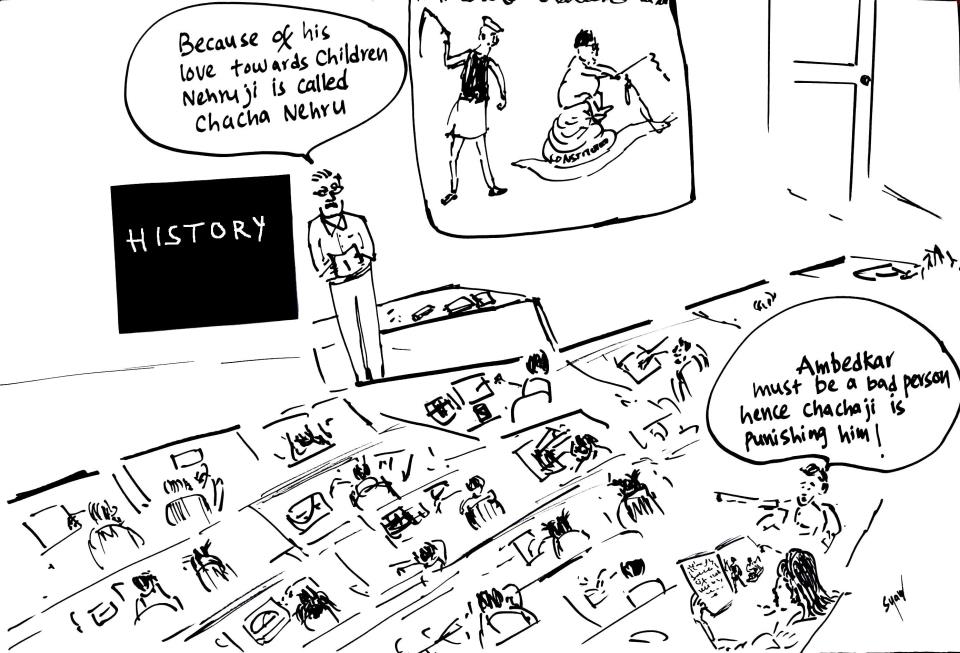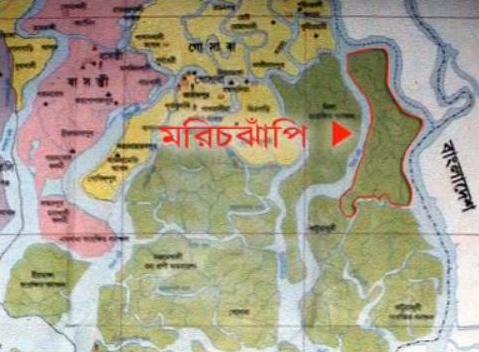Srutheesh Kannadi
Munnar has always been a place of attraction for tourists around the world because of the presence of the Western Ghats, climate and other geographical distinctiveness. The location plays a decisive role in maintaining the financial stability of the tourism industry of Kerala. Along with Alappuzha, Munnar also has a substantial contribution in glorifying Kerala tourism with the fantasy tagline “Gods own country”. The picture of Munnar, which is portrayed by the media and state, always drives us into the middle class/upper-middle class imaginations of beauty and nature. The place attracts visitors from the mainland using the glorified phrase “Kashmir of the South” and also for various reasons as promoted by the tourism industry.

But the recent documentary by Ramdas Kadavallur titled “Mannu: Sprouts of Endurance”, screened at the Chennai International Documentary and Short Film Festival on February 2020 and now available on ‘Vimeo’ platform, has put the mainstream imaginations of Munnar into an upside-down position. The movie drags the audience directly into the central theme from the very first shot with the sloganeering of “Pompilai Orumai” activists. This startling opening shot without any voice over and external narration undoubtedly depicts the political stance of the movie. As the title says, the two-hour documentary completely revolves around the concept of ‘Mannu’, meaning soil or land, where the common mass lives and struggle for earning the daily bread. The movie focuses on the other part of Munnar where the landless Tamil-Dalit labourers have been facing the historical oppression and exploitation by the corporates and plantations in the district. The labourers of Munnar have been openly victimized by the double-layered discrimination in terms of social and linguistic aspects. The director takes the audience through various levels of conflict and political contradictions existing in the plantation sector of Munnar. But the director has surely emphasized the point of justice and positively influences the audience so that they would not be misled or confused to realize what is right and wrong.
The struggles of plantation labourers to attain visibility in the public domain have a long history beginning from the colonial period. It is in Kerala, where such an egalitarian culture and progressive political thought is said to exist, that for more than one and a half-century, such an exploitative plantation system has been operating successfully. Powerful corporates like the Tata, have encroached on tens of thousands of acres of land with official support in Munnar. Historically, the migration of workers from Tamil Nadu starts from the second half of the nineteenth century. By the beginning of the twentieth century, these labourers became lasting inhabitants of Munnar. However, even today it is hard for these workers to get any certificates from the local authorities as they are not perceived as a being of the common society by the public perceptions. Their battle for recognition and visibility can’t, therefore, be lessened to a simple battle for livelihood (Expatalive, Sep8). This invisibility of labourers and their struggle for rights over various resources actually shapes the political stance of the documentary. The vast majority of the migrant labourers in Munnar are from Paraiyar, Pallar and Arunthathiyar communities. It is because of this marginality the so-called pro-active political domain of Kerala turns a blind eye towards the struggle of plantation labourers.

The bilingual narrative style of the documentary actually reflects the dual marginality of the plantation labourers who have been living for decades in the tea estates. The dual marginality of the labourers was successfully utilized/exploited by the state and corporates to deny equal rights and their claim for land ownership. In a way, these have made the identity of labourers in a crisis and the movie travels through these dual nature of oppressions and unravel the kind of exploitation and injustices being faced by the workers in Munnar. The lives of Munnar can be seen through the camera as it travels through the misery of Idukki, which was devastated by the floods of 2018 and 19.
In the beginning, the movie demands the audience to follow a JCB through the narrow roads and followed by a helicopter shot showing the destruction caused by the flood. The subaltern song about “Mannu” (Land) was also playing in the background of these shots. The improper developmental activities which have adverse effects on the marginal people were clearly communicated to the audience through these scattered shots in the movie.
The plantation labour community and their descendants have been facing various political conflicts such as identity and social crises, structural inequalities, oppression and exploitation. These people are subjected to social exclusions and unbearable persecution beyond what the mainstream Kerala public can even imagine. The director also traces the history of the struggle initiated by a group of oppressed women labourers from “Pompilai Orumai” working in various plantations and estates of Munnar. Later the camera moves to the landless indigenous tribal communities living in different regions of the Idukki district. The land is the basic and decisive question the director attempts to address throughout the movie. The question of land is all about the question of caste which progressive Kerala has never wanted to address. But the movie boldly raises the issue of landlessness of plantation labourers and the indigenous groups directly to the face of the self-claimed progressive, literate state of Kerala.
The film underscores that the pro corporate-capitalist stance that underlie the anti-labour policies of governments as a naked truth and seeks to address directly the lives of people whose survival is made more difficult by the corporate interests of the state. The camera focuses on the miserable lives of the working class, taking into account factors such as gender, caste and creed. One of the interviewees rightly observes that the state has favoured the corporates by exempting the plantations from the land reformation act which further led to the encroachment of acres of land by the private parties. Another labourer appearing in the documentary says that approximately 80,000 acres of land, have been illegally encroached by the company. It is because of the silence of the changing governments towards these illegal occupations, the labourers are still landless and forced to protest on the streets.
Undoubtedly, this film is a historical narrative of the exploited lives of the Tamil-Dalit working class, by the corporate domination from the colonial era to the Pettimudi disaster. The film questions the selective views and silence of the mainstream Keralites wearing a progressive mask. The film is a reminder that we have a responsibility to stand with the victims of the modern slave system of plantation labour and to stand up for their rights. It is because the Prathap Joseph’s camera that brilliantly travelled with the thoughts of director Ramdas Kadavallur, the film manages to communicate its political message accurately to the audience. The “Mannu” navigates through the political issues of the struggle for land even in the 21st century by a generation of people facing continuing historical injustice and oppression. In the caste-centric Indian social structure, the film strongly emphasizes that land is more than just a material object; it is a symbol of social power that leads to the reproduction of cultural capital. The film finally goes on to say that only through acquiring land ownership and rights over resources, the social upliftment of the plantation labourers, Adivasis and other subaltern communities can be fulfilled in real terms.
~~~
Srutheesh Kannadi, a research scholar from Pondicherry University.










